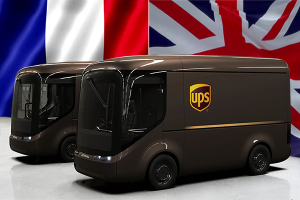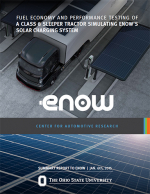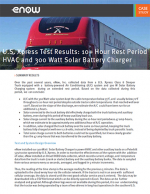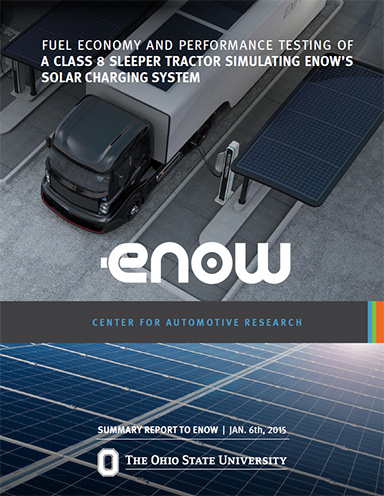Fuel Economy & Performance Testing of Enow’s Solar Charging System
The goal of this project was to find what fuel economy differences existed, if any, between a class 8 tractor during normal operation and when charging a bank of auxiliary batteries.
Vehicle testing simulating eNow’s solar charging system showed an improvement in fuel consumption when charging a simulated set of auxiliary batteries.
The smallest improvement of 1.4% in gal/mile was seen at the 60 mph Steady State point and the maximum was 15.7% in gal/hour.
The drive cycles also showed improvement, between 2.6% and 2.7% in gal/mile depending on the cycle.
When the air conditioner was turned on to simulate the closer real-world experience, the fuel economy (mpg) decreased by 4-5% for the 60 mph Stead State test sequence.
In the future, an electrified cab A/C could also be powered by solar, making this an additional opportunity for fuel economy improvement.
The testing was conducted to simulate the fuel economy differences between a regular Class 8 vehicle to charge a set of auxiliary batteries against using eNow’s solar charging system to recharge the auxiliary batteries.
However, since the eNow system removes load from the alternator, this scenario could be extrapolated to other vehicles that would use an auxiliary battery system to drive accessories and the alternator to charge those batteries.
The fuel economy is based on the horsepower needed to operate a vehicle at a particular point or cycle and the extra load on the engine to charge auxiliary batteries.
The larger the load on the alternator, the lower the fuel economy.
While the fuel economy for smaller classes of vehicles can be expected to be higher (on average), one would expect to see similar percent improvements in fuel economy for other classes of vehicles as was seen here for the Class 8 vehicle.
The results of the overall system testing show the measurable impact of electrical load on the engine alternator and fuel economy.
Although the dynamics of a long haul trip versus a short haul, local delivery trip are different, the resultant fuel economy degradation is measurable and significant over the life of the truck.
What’s Related




Favorites





